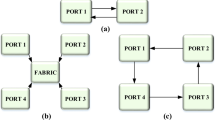Abstract
Controller area network (CAN) bandwidths are currently limited when accommodating increased traffic volume due to the increase in vehicle electronic control units (ECUs). Research is underway to develop a lossless CAN data compression algorithm that uses existing bandwidth networks to reduce the size of transmitted data while minimizing cost and reliability issues without hardware changes. In this study, we propose the optimization of quotient remainder compression (QRC) parameters to improve the compression ratio. The relationships between the divisor, quotient remainder (QR) parameters, and the amount of change in the data were analyzed, and various divisor and QR parameter values were applied to determine the optimal parameter values that provide the best compression results. Experimental results obtained using actual vehicle driving data showed that the compression rate was improved through QRC parameter optimization compared to using the existing QRC system. The proposed approach can be applied to CAN, CAN-FD, FlexRay, and Ethernet systems to reduce the bus load rate and improve the network bandwidth availability.
Similar content being viewed by others
References
Jin, S., Kim, Y. J., Kim, Y. E. and Chung, J. G. (2022) Method of improving CAN data compression efficiency using single frame. J. Institute of Electronics and Information Engineers 59, 4, 3–12.
Kelkar, S. and Kamal, R. (2012a). Control area network based quotient remainder compression-algorithm for automotive applications. IECON — 38th Annual Conf. IEEE Industrial Electronics Society, Montreal, Canada.
Kelkar, S. and Kamal, R. (2012b). Comparison and analysis of quotient remainder compression-algorithms for automotives. Annual IEEE India Conf. (INDICON), Kochi, India.
Kim, Y. J. and Chung, J. G. (2018). Efficient data arrangement method for can data compression. J. Institute of Electronics and Information Engineers 55, 12, 29–34.
Kim, Y. J. and Chung, J. G. (2019). CAN security enhancement using a data compression algorithm. J. Institute of Electronics and Information Engineers 56, 11, 115–120.
Kim, Y. J., Zou, Y., Kim, Y. E. and Chung, J. G. (2020). Multi-level data arrangement algorithm for CAN data compression. Int. J. Automotive Technology 21, 6, 1527–1537.
Lee, M. J., Oh, S. B. and Kim, J. H. (2022). Comparison and analysis of compression algorithms to improve transmission efficiency of manufacturing data. J. Korea Institute of Information and Communication Engineering 26, 1, 94–103.
Misbahuddin, S., Mahmud, S. M. and Al-Holou, N. (2001). Development and performance analysis of a data-reduction algorithm for automotive multiplexing. IEEE Trans. Vehicular Technology 50, 1, 162–169.
Oh, S. B. and Kim, J. H. (2020). Comparison and analysis of controller area network compression algorithms. Trans. KSAE 28, 9, 629–636.
Ramteke, P. R. and Mahmud, S. M. (2005). An adaptive data-reduction protocol for the future in-vehicle networks. SAE Trans., 519–530.
Son, Y. W., Moon, H. S., Jeong, J. I. and Lee, S. Y. (2006). Active CAN data reduction algorithm for in-vehicle network. KSAE Spring Conf. Proc., Jeju, Korea.
Zeng, W., Khalid, M. and Chowdhury, S. (2015). A qualitative comparison of FlexRay and Ethernet in vehicle networks. IEEE 28th Canadian Conf. Electrical and Computer Engineering (CCECE), Halifax, Canada.
Acknowledgement
This work was supported by the Korea Research Foundation with funding from the Korean government (Ministry of Science and ICT) (No. 2020R1G1A 1015210) and the ‘Regional Innovation Strategy (RIS)’ through the National Research Foundation of Korea (NRF) funded by the Ministry of Education (MOE) (2021RIS-003).
Author information
Authors and Affiliations
Corresponding author
Additional information
Publisher’s Note
Springer Nature remains neutral with regard to jurisdictional claims in published maps and institutional affiliations.
Rights and permissions
About this article
Cite this article
Lee, M.J., Oh, S.B., Kim, Y.S. et al. Divisor and QR Parameter Optimization in QRC to Improve the Compression Rate. Int.J Automot. Technol. 24, 889–899 (2023). https://doi.org/10.1007/s12239-023-0073-y
Received:
Revised:
Accepted:
Published:
Issue Date:
DOI: https://doi.org/10.1007/s12239-023-0073-y



